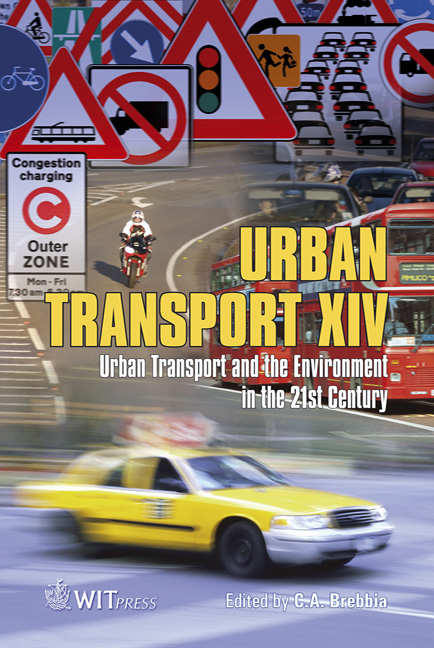Identifying Appropriate Options For Delivering Urban Transportation To Older People
Price
Free (open access)
Transaction
Volume
101
Pages
10
Page Range
57 - 66
Published
2008
Size
363 kb
Paper DOI
10.2495/UT080061
Copyright
WIT Press
Author(s)
J. F. Brake
Abstract
The range of possible options to deliver public transport services to older people in urban areas is discussed in the context of the ageing population structure in the UK. These services include registered conventional fixed route bus services, semi-fixed and flexible services, non-registered services specifically supported by local authorities and community transport operators, together with taxi and car club and car share options. Some of these services have restricted end user segments. Each service type contributes to catering for the needs of older people, as demonstrated by the case studies of a shopping service for older people targeted at residents of sheltered housing and the improvement in the delivery of services for more immobile older people. The case studies show that consultation with stakeholders can improve the appropriateness and success of the services offered. The development of a package of services (including support for passengers) that under pin the core conventional fixed route services demonstrates how older peoples’ needs can be addressed. Strong emphasis is placed upon the importance of consultation with and dissemination to stakeholders in order to deliver services. Keywords: public transport, community transport, old people, social inclusion, social exclusion, barriers, mobility, accessibility, stakeholder consultation, dissemination. 1 Introduction Increasingly it is recognised that the successful delivery of public transport services requires careful consideration of the different market segments. Using case studies this paper considers how to provide the various options now available to deliver transportation for older people living in urban areas.
Keywords
public transport, community transport, old people, social inclusion, social exclusion, barriers, mobility, accessibility, stakeholder consultation, dissemination.





